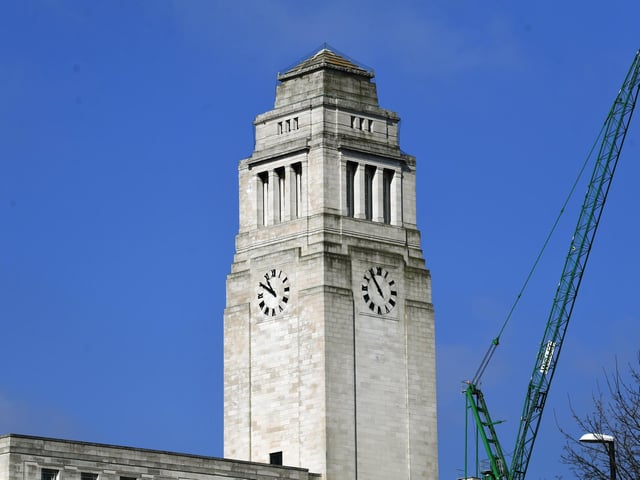J. Posadas may be history’s oddest revolutionary. Born Homero Cristalli into a poor family in Argentina in 1912, Posadas is the subject of a new book by journalist A. M. Gittlitz, I Want to Believe: Posadism, UFOs, and Apocalypse Communism.
Gittlitz acknowledges that his subject is one which “many regard as marginal, cultish, weird, and silly (UFOs and Trotskyism).” Still, as The Nation noted in its review: “During the middle of the 20th century, [J. Posadas] was one of the most prominent Trotskyists in the Western Hemisphere.”
Posadas was active in the Fourth International, founded in 1938 by the exiled Leon Trotsky and his supporters as a foil to Stalinism. In the 1950s, Posadas rose to head the Fourth International’s Latin American Bureau. Posadas & Co. broke from the Fourth International in 1962 to form their own Posadist International. The Posadist International continues to exist, along with a handful of tiny Posadist sects hanging on to life in Latin America. There are Posadist groups on Facebook, most prominently the “Intergalactic Workers’ League—Posadists.”
Waiting for E.T.
Two features distinguish Posadism from more conventional strains of Trotskyism. They are Posadas’ belief in benevolent extraterrestrial beings and Posadas’ sunny view of nuclear war.
Posadas’ seminal writing on extraterrestrials is the 1968 essay “Flying Saucers.” In this essay, Posadas piles one unwarranted assumption on top of another. He assumes that any civilization scientifically advanced enough for space travel must be both peaceful and socialist. This is because aliens’ advanced technology will create economies of abundance, thus ending conflicts over resources. Posadas also claims that human encounters with aliens confirm the aliens’ peaceful nature. Capitalists paint aliens as hostile so that downtrodden Earth people will not look to the aliens for help.
This is all so silly that I won’t bother parsing it all. I will just point out that it’s a huge leap to assume that technical advancement necessarily breeds peaceableness. The Nazis were technically advanced, but were anything but peaceable. The late Stephen Hawking warned that if humans do receive a verifiable signal from another world, we should be “wary of answering.” “Meeting an advanced civilization could be like Native Americans encountering Columbus — that didn’t turn out so well.”
Posadas and Nuclear War

Posadas’ beliefs about UFOs can be dismissed, but his ideas about nuclear war are both insane and uncomfortably close to US nuclear doctrine. Posadas believed that the struggle between capitalists and workers would culminate in nuclear Armageddon. Far from dreading this, we should welcome nuclear war because it will sweep away both capitalism and Stalinism and usher in true socialism.[1] Posadas even argued that the Soviet Union should launch a preemptive nuclear strike on the West (p. 81). Posadas admitted that nuclear war would kill millions of people, but since there were more workers than capitalists, workers would inherit the earth.
This was lunacy, but Posadas was not the only one thinking along these lines. Mao Zedong once said that “China has a population of 600 million, even if half of them are killed, there are still 300 million people left.” Mao, however, was not speaking of a first strike, but was indicating that the Chinese would survive a nuclear war even if millions of them died.
Similarly, Che Guevara once remarked that “[W]e must follow the road of liberation even though it may cost millions of nuclear war victims” (p. 98). During the Cuban Missile Crisis, Che and Castro appealed to Soviet Premier Nikita Khrushchev to resort to nuclear weapons if the Americans did not lift their naval blockade of Cuba (p. 92). Fortunately, Khrushchev ignored them.
The US, however, is the only nation which has used nuclear weapons. President Harry Truman claimed that he was forced to drop atomic bombs on Hiroshima and Nagasaki—both civilian population centers—in order to spare American lives and shorten the war in the Pacific. In actuality, the Japanese had already put out peace feelers and would have surrendered had the US promised they could keep their Emperor.
President Dwight Eisenhower remarked years later that “Where these things [nuclear weapons] can be used on strictly military targets and for strictly military purposes, I see no reason why they shouldn’t be used just exactly as you would use a bullet or anything else.”
The US has considered first use of nuclear weapons on several occasions, including during the 1961 Berlin Crisis and in Korea and Vietnam. Throughout the Cold War, military planners assumed that only nuclear weapons could halt a Soviet invasion of Western Europe, given the Warsaw Pact’s vast advantage in troops over NATO.
More recently, an August 8, 2017 tweet from former President Donald Trump (how good it feels to write “former”) threatened “fire and fury” against North Korea. Dr. Sheila Smith, a Far East expert, said on NPR that “The president didn’t say nuclear, but it sounds nuclear.”
Posadas’ upbeat take on nuclear war shocks us, and rightly so, but we should not forget that the US has always regarded nuclear weapons use as an option and has never ruled out first use.
Posadas the Man
What sort of person was Posadas? A pretty nasty one. Posadas replaced Leninist “democratic centralism” which permitted free discussion with what he called “monolithism,” meaning only Posadas’ opinions mattered (p. 67). Dissenters found themselves denounced as police spies and expelled (p. 61).
His harsh demands on his followers strengthened Posadas’ resemblance to a cult leader. Posadas imposed a strict moral regimen, frowning upon sex even between husbands and wives. Homosexuality was grounds for immediate expulsion. Posadas disliked jokes, but liked to sing.
Posadas was insulting and paranoid. He believed imperialists were plotting against him. Without any grounds, Posadas accused his wife and mistress of infidelity and exiled his wife to Germany.
Overoptimistic to the point of self-delusion, Posadas treated even obvious calamities, such as the 1973 overthrow of Salvador Allende in Chile, as evidence that revolution was just around the corner.
Posadas’ attention deficit disorder kept him from writing (p. 69). Once Posadas acquired a tape recorder, however, his thoughts took wing. Posadas’ talks were published as articles, each one ending with a jaunty “Viva Posadas!” (p. 86). It sounded like Posadas was high fiving himself, but the words were inserted by the Posadists who transcribed the master’s teachings.
Posadas’ “writings” became wilder and wilder, taking a decidedly New Age turn. In the last year of his life, Posadas pronounced that dolphins possessed telepathic powers and would in time be kept as household pets (p. 150).
How should we assess Posadas’ place in Trotskyism? Revolutionary ideology should provide a guide to action in order to be worth anything. Posadas’ ideas give revolutionists nothing to act on. Socialist space gods may or may not exist. If they do, there’s no telling when they will show up. As for nuclear war, Posadas suggests we must destroy the world in order to save it. We should all be grateful that Posadas had no nuclear weapons. Posadas had gifts as an organizer and activist. As a theorist, he was a bust.
Notes.
1. This view is hard to square with Posadas’ exhortation in “Flying Saucers”: “We must suppress the force currently in the hands of the capitalist system: nuclear weapons. Destroy all nuclear weapons.” ↑





 Despite storing only one per cent of the Earth's total ice volume, glaciers have contributed to almost a quarter of the global ice losses over the study period, with all glacier regions around the world losing ice.
Despite storing only one per cent of the Earth's total ice volume, glaciers have contributed to almost a quarter of the global ice losses over the study period, with all glacier regions around the world losing ice.
